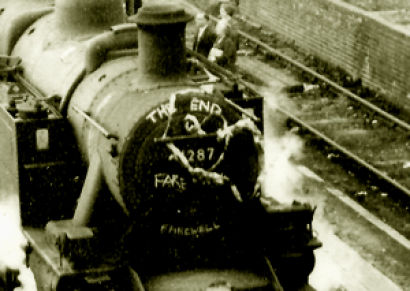1963 was a turning point for the railways in Britain.
The British Railways Board took over from the British Transport Commission on 1 January, and the first edition of Railnews was published in July.
But railways really hit the headlines on 27 March, when the Chairman, Dr Richard Beeching, published his report on The Reshaping of British Railways.
It was the closures recommended in the report which grabbed the attention of the media. Dr Beeching pointed out that too much of the railway was still trying to do the job it had done since the Victorian era, and that the need for this had gone.
He was optimistic about the future of the railway as an intercity, trainload freight operation. Commuter trains would also continue, particularly those serving London. But it was the branch and secondary lines which bore the brunt of his ‘axe’, and the report listed the services and stations which it said were no longer worth having. In all, some 2000 stations were proposed for closure along with some 8000km of route.
Not all the Beeching recommendations actually took place, but a few more lines not mentioned in the report were also closed in later years, such as Oxford–Cambridge (part), Barnstaple–Ilfracombe and Taunton–Minehead.
It is a mistake to associate Dr (later Lord) Beeching with closures alone. He was also responsible for the launch of Intercity and Freightliner services, as well as the introduction of the ‘corporate image’ and the new name ‘British Rail’ in early 1965.
---------------------------------------------------------
At the start of 1963, BR had:
4306 passenger stations
20 780km of passenger/freight lines
7347km of freight-only lines
8767 steam locomotives
3683 diesel locomotives
178 electric locomotives
4110 dmu vehicles
6996 emu vehicles
22 715 hauled passenger vehicles
(Source: BRB Annual Report)
----------------------------------------------------------
1717 steam locomotives were withdrawn in 1963, and 378 more diesel locos entered service.
Early 1963 was also distinguished by prolonged, severe winter weather. BR estimated that 5000 passenger trains and 13 000 freight trains were cancelled in January alone because of the poor conditions. Both diesel and steam locomotives were badly affected, and the freezing of coal in wagons was another serious problem. However, diesel multiple units ‘continued to operate on the whole without due trouble’.
A new prototype train of eight main line coaches was under construction at Derby during the year. This would become the XP64 set, which would be unveiled in 1964 along with the first Mk2 coaches.
Resignalling of the West Coast Main Line was extended southwards to Brinklow during the year, and a new panel box was opened at Nuneaton which replaced seven manual boxes. Work was continuing on new panel boxes at Rugby, Bletchley and Watford as part of the major programme of electrification between London and the north west.
1963
7th October 2009


